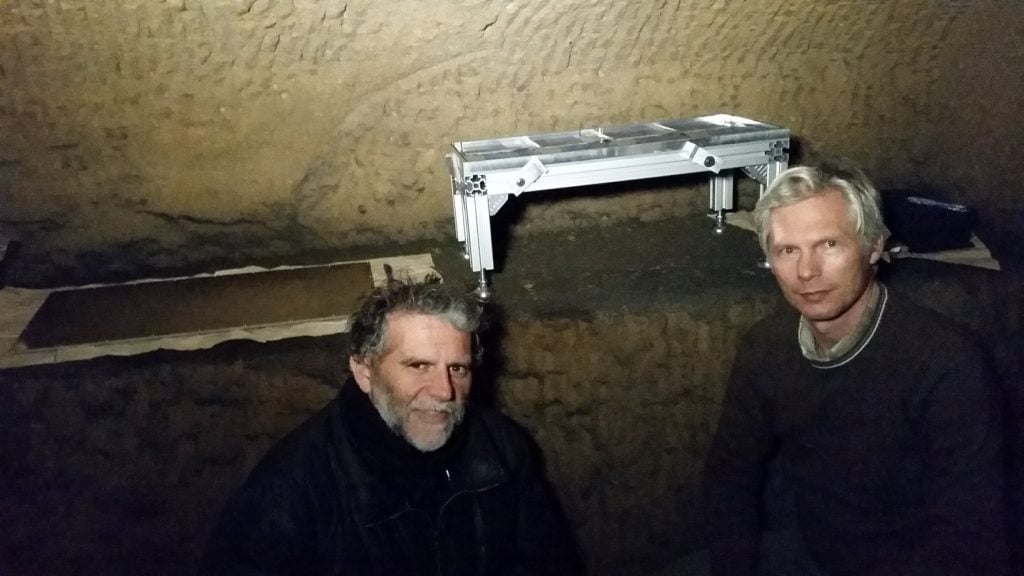Archaeology & History
Cosmic Ray Scanning Has Revealed a Greek Tomb Hidden Beneath the City of Naples
Researchers used a powerful scanning technique that can penetrate through rocks and walls far below the earth's surface.

Researchers used a powerful scanning technique that can penetrate through rocks and walls far below the earth's surface.

Jo Lawson-Tancred

With cutting-edge technologies increasingly available, not every archaeological discovery requires a dig anymore. Instead, researchers have used “non-invasive” scanning techniques that rely on cosmic rays to detect ancient sites, like a Greek tomb that was recently found beneath Naples, Italy, according to LiveScience.
Though the existence of these burial sites was previously known, nobody has been able to reach them—until now.
Using muography, a scanning technique similar to an X-ray that uses muon-producing cosmic rays to detect open spaces and visualize them as 3D images, researchers glimpsed past the city’s busy streets and 33 feet below the its surface, to find a subterranean burial chamber underground that may have been built during the 6th century BCE. It has remained hidden for centuries below layers of history, including, most notably, Christian catacombs from around the 2nd to 4th centuries C.E., or the late Roman era.
The team of Italian and Japanese researchers explained in their report, published in April, scanning with subatomic particles called muons allows them to penetrate much more deeply than they could with X-rays and to detect objects beyond walls and rocks. Because muons scatter in open space, their volume, trajectory, and flux can be measured by a highly sensitive particle detector. Similar techniques have been used by ScanPyramids, a cross-continental initiative that uncovered a hidden tunnel beneath the Great Pyramid of Giza in March.
The main challenge, however, is that the detector has to be below the target because muons come down from the sky. The researchers buried the tool in a nearby cellar that, at 59 feet below the earth, was even deeper than the tombs. The team recorded the muon activity for a month; one particularly dense excess of muons indicated the presence of a rectangular cavity, a burial chamber. Unfortunately, the technique was not able to reveal the contents of the chamber.
Modern-day Naples replaced the Cumae, the first ancient Greek colony on the mainland of Italy, in 650 BCE. Where Naples now sits there was a Hellenistic necropolis as well as temples and a forum complete with ancient sewage systems.
More Trending Stories: